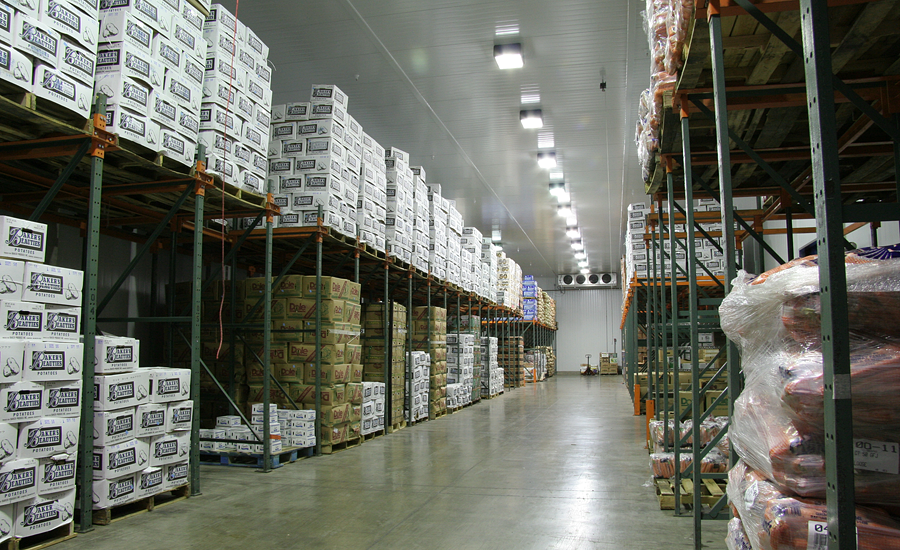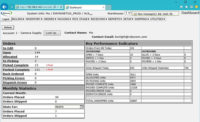Armstrong Produce started as a small, family-run wholesale business in Honolulu, Hawaii, and today, is a leading produce wholesaler and distributor, supplying fresh produce to a wide range of customers throughout the islands, from local chefs to big box retailers.
As a result, Armstrong Produce needed a system that would:
- Improve order picking productivity on all shifts.
- Minimize shipping errors.
- Increase operational efficiency and reduce overlap between shifts.
- Streamline the order checking process.
- Ensure traceability down to the pallet and case level.
- Instantly access all lot information, including who a lot was sold to, if it was broken, who it was shipped to and when it was sold.
- Improve reconciliation.
Back in 2011, Armstrong Produce used “paper pick tickets” for every order. That required handwriting lot numbers and using line-by-line shipping information for each item. It was a significant amount of manual work and was prone to errors.
Armstrong Produce wanted more efficiency and accuracy in their operations.
“We wanted a better system,” says Jingjing Verzosa, systems director at Armstrong Produce. “We needed to increase our picking productivity, minimize shipping errors, streamline order checking and ensure traceability for all our customers. We believe in ‘farm-to-fork’ produce traceability. And, we comply with the PTI (produce traceability initiative) guidelines and the COOL (Country of Origin Labeling) law. So, we needed a system to help us address those demands.”
That’s why Armstrong Produce selected a warehouse management system (WMS) from Produce Pro Software, Woodridge, Ill.
“We spent hours on site with each shift,” adds Dave Ivey, WMS manager at Produce Pro. “It was essential to see their work in motion and experience the day-to-day processes.”
Once Produce Pro pinpointed the individual needs and nuances of Armstrong Produce, the next steps were to develop an accurate project plan and tailor the WMS solution accordingly. Produce Pro also provided the one-on-one training to make sure employees on both shifts were comfortable with the WMS.
“For me, the biggest surprise was the scope of the WMS and how it affected so many different parts of the company positively,” says Les Watanabe, assistant director of operations at Armstrong Produce. “For example, now we have drivers that are not waiting around for orders to be ready, and when our customers have questions, we can answer them in seconds. Today, we use the WMS to ensure location integrity, inventory integrity, order making efficiency and accuracy, invoicing, loading and dispatching. It makes a difference every day.”
“Our customer service representatives use the WMS windows to check the status of orders,” adds Verzosa. “Sales managers rely on it, too. Even buyers use the receiving windows. So, I would say everybody at our company uses the WMS.”
Another improvement was the ability for Armstrong Produce to maintain better visibility across the operation.
“We process a large number of orders,” Watanabe says. “We might do 600 orders a day, and they’re called in at different times. For us to efficiently assign these orders and get them loaded in a limited amount of space is critical. One of our warehouses handles transfer, another one is for sales and inventory is always moving. The WMS gives us more control of reconciling all our inventory across all of our warehouses. That’s really the biggest difference. Our information is so much more accurate and efficient than prior to using the WMS.”
Maintaining traceability at every step is a cornerstone of Armstrong Produce’s business.
“With the WMS, we can trace product up to the last pound in the box,” adds Watanabe. “That’s how good it is.”
“During a couple of our recent audits, even the auditor was impressed with the system. Rather than having to document everything, he said that the WMS history would suffice. There are no slow days at Armstrong Produce, so optimal efficiency matters for every shift. Using the WMS has helped to reduce costly overtime and overlap between shifts,” adds Watanabe. “We’re open 24/7. So, we have two shifts—a day and a night shift. Before the WMS, our day crew would show up at 3:00 a.m. in the morning. And, the night crew, at times, didn’t finish until 5:00 a.m. With the WMS, if our night crew stays until 1:00 a.m., they’re staying late. These days, they’re usually done by midnight. Training new employees is also much easier because they don’t really have to know all of the codes, unlike before. Now it’s as simple as scanning barcodes and numbers and checking the quality. Some of our newer guys don’t even know that ‘pick tickets’ existed. They wouldn’t know what to do without the WMS. It’s way more productive.”
It has been over five years since Produce Pro installed the WMS for Armstrong Produce, and the positive efficiency and savings numbers confirm that it was a wise investment. However, there’s another aspect to any system, and that’s the level of ongoing support a company provides after installation.
“Most IT companies have an SLA (service level agreement) of four hours,” says Verzosa. “In our world, that’s not going to work. But, Produce Pro knows our sense of urgency. They appreciate that they need to respond, and they’re always there. You can tell that the Produce Pro Team has passion for what they do. I would tell [other companies] not to think twice. Get the WMS. It improves more areas than you can imagine.”



